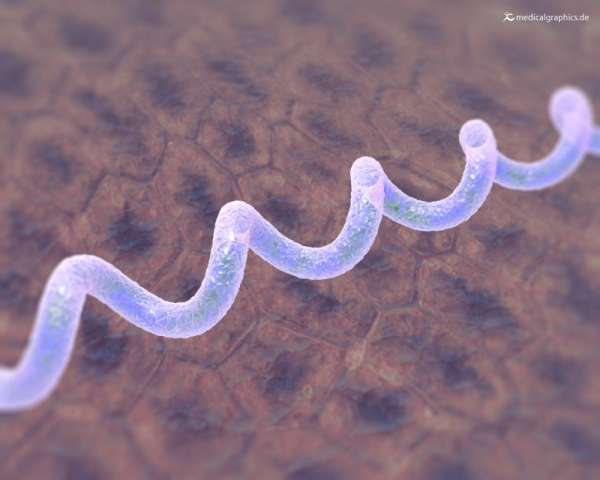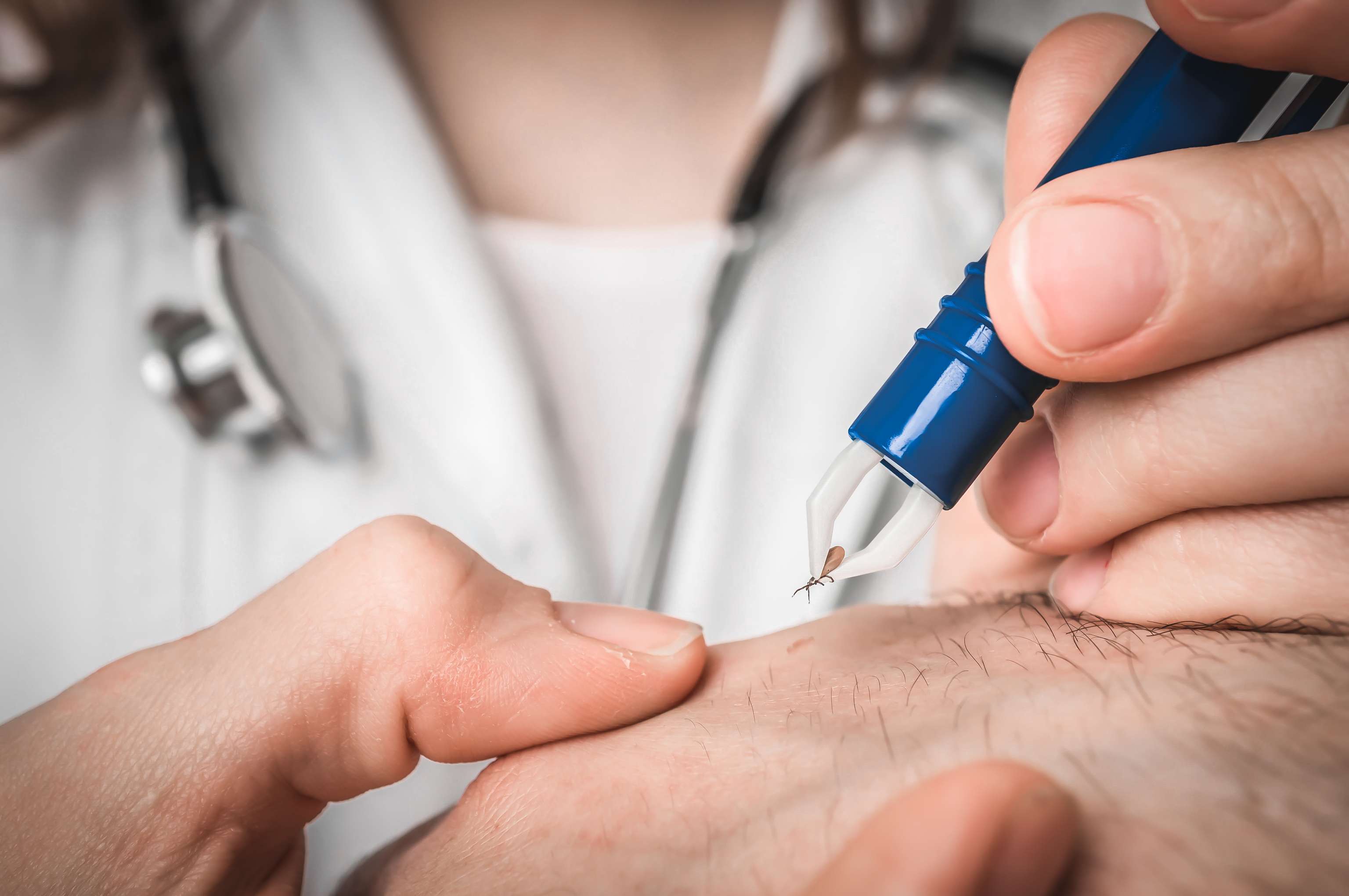Basics
The causative agent of Lyme disease is the bacterium Borrelia burgdorferi. The bacteria are transmitted to humans through tick bites.
In 1975, an increased incidence of joint inflammation after tick bites was observed for the first time in Lyme (USA). This is also the origin of the name Lyme disease. The pathogen Borrelia burgdorferi was then discovered by Wilhelm Burgdorfer in 1981.
Lyme disease progresses in several stages, which do not necessarily occur in all sufferers. One indication is a noticeable reddening of the skin around the tick bite, which also heals without treatment. In severe courses and in later stages, muscles, joints and nerves may be affected, which can have permanent consequences. The most effective treatment is early treatment with antibiotics.
Lyme disease is more common in people who spend a lot of time outdoors for work or leisure, e.g. forestry workers or gardeners. Most tick bites occur in the months of June/July, but most infections usually occur between March and October.



